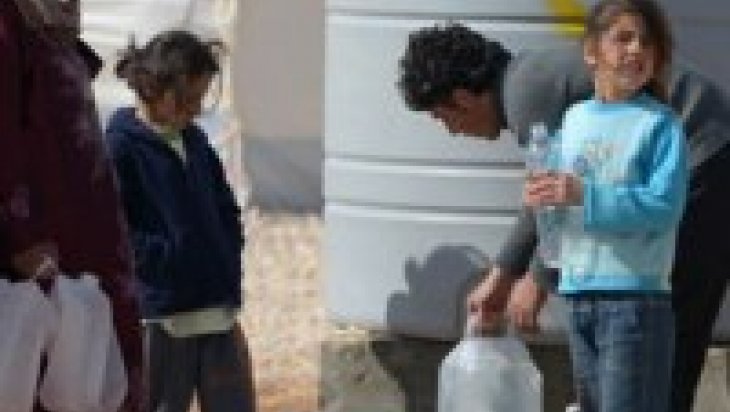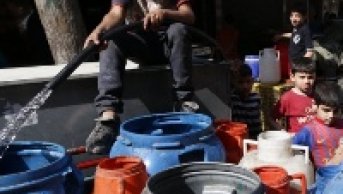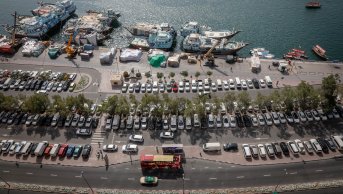Jordan, Syrian Refugees and Water Problem

According to official figures from the UNHCR, 1.244 million Syrians have taken shelter in neighboring countries such as Turkey, Jordan and Iraq since April 2011, following the Arab Spring’s arrival in Syria on March 2011. Some 230,000 people are still waiting in line for registration.
It is feared that Syrians taking shelter in Jordan in particular might face a major problem regarding water, especially in the forthcoming summer months. In terms of the amount of water there is per capita in the Middle East and in the world, Jordan and Palestine are two of the poorest countries. Along with the dry spell prevailing in the area for the last decade, water shortages have become worse in Jordan and agricultural activities have also been negatively affected in the country.
Each day, some 3,000 Syrians flee into Jordan. According to the aid organizations in Jordan, there are approximately 400,000 Syrians who have taken shelter in the country. It is feared that this figure might reach 1 million by the end of the year. The population in Mafraq has doubled since the beginning of the unrest in Syria. While international aid organizations provide food, accommodation and fuel, the water supply provided from outside is not sufficient. Some of those organizations also have the responsibility to supply water to refugee camps and for sanitation. The organizations and the camps they are responsible for are listed as follows: ACTED Jordan (Agency for Technical Cooperation and Development) -- King Abdullah Refugee Camp, Cyber City Refugee Camp and Zaatari Refugee Camp; IRD Jordan (International Relief and Development) -- Zaatari Refugee Camp; JEN Jordan (Japan Emergency NGOs) -- Zaatari Refugee Camp; Mercy Cops Jordan -- Zaatari Refugee Camp; Oxfam -- Zaatari Refugee Camp; THW (Federal Agency for Technical Relief) Jordan -- Zaatari Refugee Camp; UNESCO Jordan -- Cyber City Refugee Camp and Zaatari Refugee Camp. In addition, the local Red Crescent Society also provides water to the camps.
The majority of refugees in Jordan have settled in the camps that were set up in Zarqa and Mafraq provinces. The water shortage in terms of both quantity and also access to water resources in the camps has been on the agendas of international organizations and the media for the last two months. According to information received from news reports, while there is a major problem regarding a lack of water in Mafraq province, there is no water at all in certain areas. There are some 170,000 people in the Zaatari camp, which is located in Mafraq province and is the biggest refugee camp in Jordan. The water shortage is expected to get worse as a result of increasing temperature and new groups of refugees arriving from Syria. It is estimated that water consumption per capita, other than drinking water, is 53 liters per day. It is assumed that refugees who do not stay in refugee camps consume 20 to 50 liters of water per day, including drinking water.
The existing water problem has become even more evident upon the arrival refugees in the country. Jordan has been meeting its water needs from ground waters for many years due to the lack of surface waters. According to the British aid organization Oxfam, the population has increased as a result of the immigration from Syria. This situation has led to some wells drying up. According to another report published by Oxfam, 65 percent of water transported to Mafraq province is lost through the pipelines and as a result of people illegally tapping into the pipelines. Furthermore, it is mentioned in the reports that there are also problems in terms of the quality of water. The quality problem leads to water-related diseases and an additional cost for its filtration. Those who live in refugee camps cannot afford the cost of water filtration. As a general solution, chlorine is added to waters in tankers, which the World Health Organization (WHO) permits, but the fact is that that water can create other hygiene problems if it is kept in old tankers and not consumed within a short time of period.
In a survey with Syrians who are not staying in refugee camps which was conducted by an NGO called CARE, it was recorded that 77 percent of the refugees do not have access to drinking water and that they have to buy treated and packaged water.
The authorities suggesting that water will be a problem in the upcoming process assert that a solution has to be found, and also it is feared that pointing to Syrians as responsible for the water shortage caused by the increase in water consumption could give rise to tension in society. Furthermore, the insufficient amount of water along with the cost of filtration was announced by Oxfam as a problem. As a solution, positive results can be obtained in the short run through projects that provide small-scale water conservation in the first place, but long-term projects are required for Jordan Ministry of Water and Irrigation to provide durable solutions.




